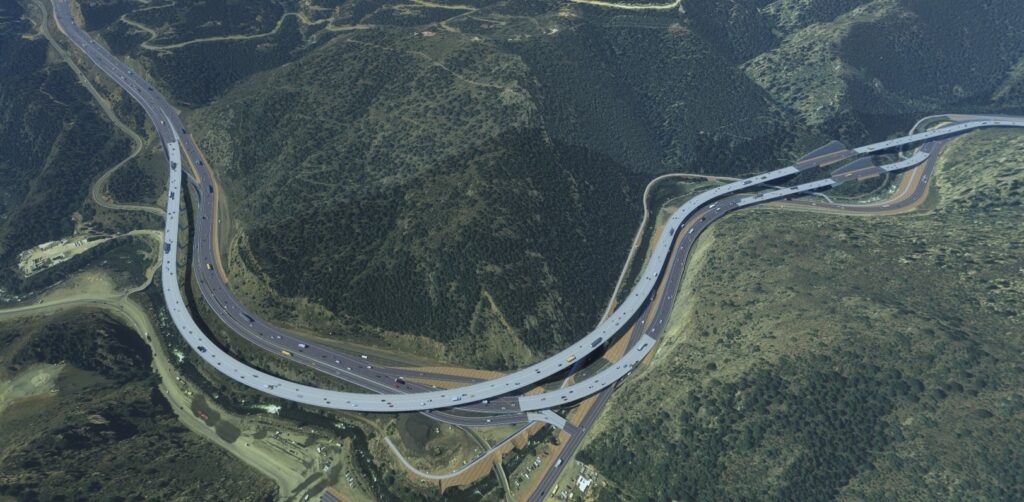Guest Post Author: Dustin Parkman, Vice President of Industry Solutions, Bentley Systems
When considering the state of the Indian transportation infrastructure, it is easy to become disheartened by what can seem like an insurmountable array of problems. Traffic congestion not only blocks mobility but also contributes to air pollution. Meanwhile, public transportation is often inadequate or poorly developed, and roads, bridges, and tunnels across the nation need repair.
Yet, when looking at the sector, it’s important to see these challenges and the opportunities they present. Transportation is about moving goods and people–perhaps more than any other space, a strong sector translates to a better quality of life and resilient economies.
Current Challenges
The many challenges of the industry can be grouped into a few key areas:
Infrastructure repair
The poor quality of most constructions and their regular maintenance in India are important issues that the sector needs to addressed. For example, roads across states are reported to have several flaws within the first year of construction. This situation is often due to the use of poor-quality materials and execution-related issues. According to CareEdge Ratings, there may be a 7% to 10% slowdown in this year’s national highway development rate in India due to execution challenges, despite a healthy uptick.
The existing infrastructure is ignored and poorly maintained, which multiplies costs in the long term and adds to the deterioration. As this infrastructure ages, maintenance also becomes a relevant concern. For instance, the Pragati Maidan Tunnel—which aimed to provide hassle-free and seamless connectivity between Central, Southeast, and New Delhi—was found to have water seepage issues, large cracks in the cement/concrete, and poor drainage.
Often, the adoption of new and improved technology is not fast enough, leading to a lack of effectiveness and proper quality. The most efficient way to combat these infrastructure issues would be to adopt modern construction technologies.
In India, there is a dire need for modern construction infrastructure that is sustainable and innovative. The industry is at a crossroads, and a better path can be chosen by adopting new and improved technology and materials. The key to becoming an environmentally conscious, economically robust, and effective industry lies in adapting to these advancements and developments. To aid the nation’s journey towards urbanization, the construction sector must adapt and overcome to manage the needs of the 21st century. Adopting new raw materials and improved technology is no longer merely a choice, but a necessity.

Sustainability
Within the scope of any repairs or expansions, mitigating climate change is a pressing concern. Amid a global push to design new green transportation infrastructure, it’s important not to forget maintenance and repairs. Retrofits and new construction should prioritize sustainability by utilizing alternative/greener building materials so existing infrastructure can become more resilient to the impacts of climate change. Moreover, it’s important to ensure that repair or retrofit processes do not themselves lead to negative environmental impacts. Right now, construction accounts for 70% of global emissions, so new sustainable methods and capabilities are sorely needed.
Optimization
Any transportation infrastructure upgrade, whether it’s roads, bridges, rail, tunnels, or waterways, shares a singular goal—to safely optimize the flow of people and goods. At the same time, this flow is something of a moving target–it is inherently dynamic, driven by environmental, geographic, government regulatory, and economic factors. Ultimately, transportation infrastructure upgrades need to incorporate and account for these factors to create effective networks—and when much of our infrastructure is nearly 80 years old, we’re playing catch-up.
Digital Transformation
Transportation infrastructure needs both structural updates and technological updates. The manual processes upon which these systems need to operate can and should be replaced with automation. However, the transportation sector has been conservative in its adaptation and implementation, despite nearly everyone agreeing that this type of conversion is essential for economic growth. Digital technologies can not only improve transportation, helping to move and connect people and goods more efficiently, but also ameliorate the environmental footprint of these networks. Broad implementation of new technologies is a must.
Innovative Solutions
The good news is that technological solutions are emerging to facilitate the kinds of systemic improvements that the Indian transportation sector needs. Infrastructure digital twins can be used to create simulations of physical assets, such as bridges, roads, or tunnels, and replicate various scenarios to help planners, engineers and builders see opportunities or potential hiccups. These simulations can also predict maintenance needs, safety hazards, and energy inefficiencies, identifying areas where improvements are needed. Infrastructure digital twin capabilities can collect and merge often-siloed datasets and workflows, incorporating information from disparate sources to support data-driven decision-making that yields cost, time, and environmental savings.
Recently, we have seen some promising use cases for digital twins in sustainable infrastructure maintenance, upgrades, and retrofits. One of these examples is an ongoing project to realign and upgrade a section of I-70 at Floyd Hill, some 25 miles west of Denver. The goal is to relieve a severe bottleneck, improving traffic flow and safety, as well as lowering emissions through this mountainous and heavily traveled section of roadway. By using collaborative 3D modeling and digital twin applications, project lead AtkinsRéalis evaluated geometrics and parameters such as sight distance, visualized a range of different possible designs, and determined construction impact and feasibility—all of which were undertaken collaboratively with stakeholders, leading to an estimated savings of USD 7 million in project costs and 50,000 work hours.

Another successful use case is the upgrade of the East 138th Street Bridge in the Bronx, New York. Built in 1938, the bridge—which crosses over the Major Deegan Expressway and links Manhattan to the Bronx, approximately one mile from Yankee Stadium—needs to accommodate heavy vehicle and pedestrian traffic, as well as eliminate vertical clearance issues that have resulted in vehicles striking the old bridge several times. Digital twins were used to review 180 different potential designs for this critical section of city infrastructure, determining which would be the most functional both during bridge replacement and in perpetuity, and accommodating an array of utilities connected to the bridge. The collaborative digital context established by digital twins not only optimized structural design but also kept the project on track during pandemic restrictions.

Some Final Thoughts
It’s a challenging time for the Indian transportation sector, but also an exciting one. Public and private organizations both are transforming the infrastructure landscape, leveraging the newest technologies to enable a 20th-century system to address 21st-century challenges. Using digital twin capabilities, we can repair ageing assets and contend with geographic, transportation, and environmental challenges—all while meeting the needs of a country on the move.
Author – Dustin Parkman

Dustin Parkman is vice president of transportation at Bentley. He has held several senior product and business development positions throughout his career, and has specialized in developing products and solutions that service the infrastructure industry. Parkman has dedicated his career to creating technology that allows engineers, contractors, and owners to automate the construction and operation of infrastructure.



